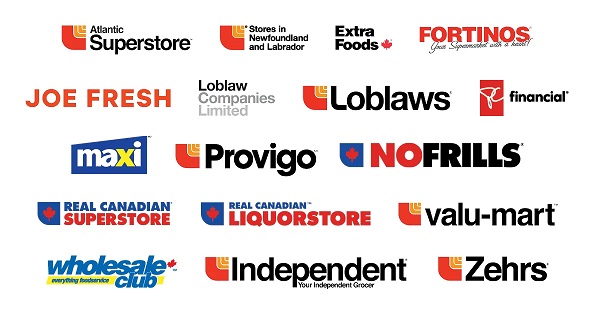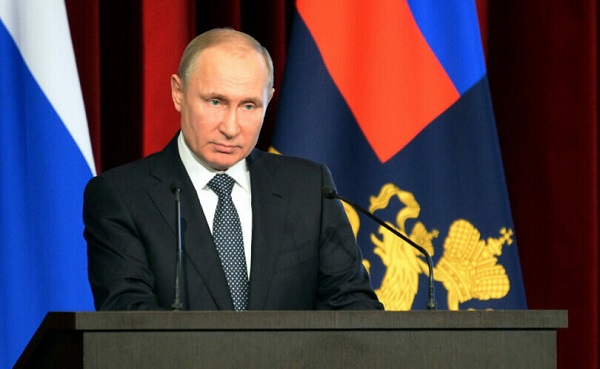Uncategorized
Trump backs use of ‘very safe’ tear gas on crowd of migrants

SAN DIEGO — President Donald Trump is strongly defending the U.S. use of tear gas at the Mexican border to repel a crowd of migrants that included angry rock-throwers but also barefoot, crying children.
Critics denounced the border agents’ action as overkill, but Trump kept to a hard line.
“They were being rushed by some very tough people and they used tear gas,” Trump said Monday of the previous day’s encounter. “Here’s the bottom line: Nobody is coming into our country unless they come in legally.”
At a roundtable in Mississippi later Monday, Trump seemed to acknowledge that children were affected, asking, “Why is a parent running up into an area where they know the tear gas is forming and it’s going to be formed and they were running up with a child?”
He said it was “a very minor form of the tear gas itself” that he assured was “very safe.”
Without offering evidence, he also claimed that some of the women are not really parents but are instead “grabbers” who steal children so they have a better chance of being granted asylum in the U.S.
The showdown at the San Diego-Tijuana border crossing has thrown into sharp relief two competing narratives about the caravan of migrants hoping to apply for asylum but stuck on the Mexican side. Trump portrays them as a threat to U.S. national security, intent on exploiting America’s asylum law, but others insist he is exaggerating to stoke fears and achieve his political goals.
The sheer size of the caravan makes it unusual.
“I think it’s so unprecedented that everyone is hanging their own fears and political agendas on the caravan,” said Andrew Selee, president of the Migration Policy Institute, a nonpartisan
Trump rails against migrant caravans as dangerous groups of mostly single men. That view featured heavily in his speeches during the midterm election campaign when several were hundreds of miles away,
Mario Figueroa — Tijuana’s social services department director who is overseeing operations at the sports complex where most of the migrants in the caravan are staying — said as of Friday that of the 4,938 staying there, 933 were women, 889 were children and 3,105 were men, which includes fathers
The U.S. military said Monday that about 300 troops who had been deployed in south Texas and Arizona as part of a border security mission have been moved to California for similar work. The military’s role is limited largely to erecting barriers along the border and providing transportation and logistical support to Customs and Border Protection.
Democratic lawmakers and immigrant rights groups blasted the border agents’ Sunday tactics.
“These children are barefoot. In diapers. Choking on tear gas,” California Gov.-elect Gavin Newsom tweeted. “Women and children who left their lives behind — seeking peace and asylum — were met with violence and fear. That’s not my America.”
U.S. Customs and Border Protection Commissioner Kevin McAleenan said the administration’s concerns about the caravan “were borne out and on fully display” Sunday.
McAleenan said hundreds — perhaps more than 1,000 — people attempted to rush vehicle lanes at the San Ysidro crossing. Mexican authorities estimated the crowd at 500. The chaos followed what began as a peaceful march to appeal for the U.S. to speed processing of asylum claims.
After being stopped by Mexican authorities, the migrants split into groups. On the west side of the crossing, some tried to get through razor-wire fencing in a concrete levee that separates the two countries. On the east side, some pulled back a panel of fencing made of Army surplus steel landing mats to create an opening of about 4 feet, through which a group of more than 30 people crossed, according to a U.S. official who was not authorized to discuss the matter publicly and spoke on condition of anonymity. Others made it over a steel fence farther east.
McAleenan said four agents were struck with rocks but were not injured because they were wearing protective gear.
Border Protection agents launched pepper spray balls in addition to tear gas in what officials said were on-the-spot decisions made by agents. U.S. troops deployed to the border on Trump’s orders were not involved in the operation.
“The agents on scene, in their professional judgment, made the decision to address those assaults using less lethal devices,” McAleenan told reporters.
The scene was reminiscent of the 1980s and early 1990s, when large groups of migrants rushed vehicle lanes at San Ysidro and overwhelmed Border Patrol agents in nearby streets and fields.
U.S. authorities made 69 arrests Sunday. Mexican authorities said 39 people were arrested in Mexico.
The scene left many migrants feeling they had lost whatever possibility they might have had for making asylum cases.
Isauro Mejia, 46, of Cortes, Honduras, looked for a cup of coffee Monday morning after spending Sunday caught up in the clash.
“The way things went yesterday … I think there is no chance,” he said.
Mexico’s Interior Ministry said in a statement it would immediately deport those people arrested on its side and would reinforce security.
Border Patrol agents have discretion on how to deploy less-than-lethal force. It must be both “objectively reasonable and necessary in order to carry out law enforcement duties” — and used when other techniques are insufficient to control disorderly or violent subjects.
Last week, Trump gave
With the caravan as a backdrop, Trump has used national security powers to circumvent long-standing immigration law to deny asylum to anyone caught crossing the border illegally. However, a court has put those regulations on hold after civil liberties groups sued. On Thanksgiving Day, the president warned of “bedlam, chaos, injury and death” if the courts block his efforts to harden immigration rules.
But it’s also possible that Sunday’s clash was borne of increasing desperation caused by the hardening of the policies, said Rachel Schmidtke, program associate for migration at the Woodrow Wilson International Center for Scholars Mexico Institute.
“This situation is now escalating to the point of a self-fulfilling prophesy,” she said. “The more you squeeze, the more it artificially creates something that didn’t exist, but now is starting to become a crisis.”
___
Long reported from Washington. Associated Press writers Robert Burns in Washington; Julie Watson in San Diego; Jill Colvin in Biloxi, Miss.; and Christopher Sherman in Tijuana, Mexico, contributed to this report.
Colleen Long And Elliot Spagat, The Associated Press
Uncategorized
Cost of bureaucracy balloons 80 per cent in 10 years: Public Accounts

The cost of the bureaucracy increased by $6 billion last year, according to newly released numbers in Public Accounts disclosures. The Canadian Taxpayers Federation is calling on Prime Minister Mark Carney to immediately shrink the bureaucracy.
“The Public Accounts show the cost of the federal bureaucracy is out of control,” said Franco Terrazzano, CTF Federal Director. “Tinkering around the edges won’t cut it, Carney needs to take urgent action to shrink the bloated federal bureaucracy.”
The federal bureaucracy cost taxpayers $71.4 billion in 2024-25, according to the Public Accounts. The cost of the federal bureaucracy increased by $6 billion, or more than nine per cent, over the last year.
The federal bureaucracy cost taxpayers $39.6 billion in 2015-16, according to the Public Accounts. That means the cost of the federal bureaucracy increased 80 per cent over the last 10 years. The government added 99,000 extra bureaucrats between 2015-16 and 2024-25.
Half of Canadians say federal services have gotten worse since 2016, despite the massive increase in the federal bureaucracy, according to a Leger poll.
Not only has the size of the bureaucracy increased, the cost of consultants, contractors and outsourcing has increased as well. The government spent $23.1 billion on “professional and special services” last year, according to the Public Accounts. That’s an 11 per cent increase over the previous year. The government’s spending on professional and special services more than doubled since 2015-16.
“Taxpayers should not be paying way more for in-house government bureaucrats and way more for outside help,” Terrazzano said. “Mere promises to find minor savings in the federal bureaucracy won’t fix Canada’s finances.
“Taxpayers need Carney to take urgent action and significantly cut the number of bureaucrats now.”
Table: Cost of bureaucracy and professional and special services, Public Accounts
| Year | Bureaucracy | Professional and special services |
|
$71,369,677,000 |
$23,145,218,000 |
|
|
$65,326,643,000 |
$20,771,477,000 |
|
|
$56,467,851,000 |
$18,591,373,000 |
|
|
$60,676,243,000 |
$17,511,078,000 |
|
|
$52,984,272,000 |
$14,720,455,000 |
|
|
$46,349,166,000 |
$13,334,341,000 |
|
|
$46,131,628,000 |
$12,940,395,000 |
|
|
$45,262,821,000 |
$12,950,619,000 |
|
|
$38,909,594,000 |
$11,910,257,000 |
|
|
$39,616,656,000 |
$11,082,974,000 |
Uncategorized
Trump Admin Establishing Council To Make Buildings Beautiful Again


From the Daily Caller News Foundation
By Jason Hopkins
The Trump administration is creating a first-of-its-kind task force aimed at ushering in a new “Golden Age” of beautiful infrastructure across the U.S.
The Department of Transportation (DOT) will announce the establishment of the Beautifying Transportation Infrastructure Council (BTIC) on Thursday, the Daily Caller News Foundation exclusively learned. The BTIC seeks to advise Transportation Secretary Sean Duffy on design and policy ideas for key infrastructure projects, including highways, bridges and transit hubs.
“What happened to our country’s proud tradition of building great, big, beautiful things?” Duffy said in a statement shared with the DCNF. “It’s time the design for America’s latest infrastructure projects reflects our nation’s strength, pride, and promise.”
“We’re engaging the best and brightest minds in architectural design and engineering to make beautiful structures that move you and bring about a new Golden Age of Transportation,” Duffy continued.
Mini scoop – here is the DOT’s rollout of its Beautifying Transportation Infrastructure Council, which will be tasked with making our buildings beautiful again. pic.twitter.com/
9iV2xSxdJM — Jason Hopkins (@jasonhopkinsdc) October 23, 2025
The DOT is encouraging nominations of the country’s best architects, urban planners, artists and others to serve on the council, according to the department. While ensuring that efficiency and safety remain a top priority, the BTIC will provide guidance on projects that “enhance” public areas and develop aesthetic performance metrics.
The new council aligns with an executive order signed by President Donald Trump in August 2025 regarding infrastructure. The “Making Federal Architecture Beautiful Again” order calls for federal public buildings in the country to “respect regional architectural heritage” and aims to prevent federal construction projects from using modernist and brutalist architecture styles, instead returning to a classical style.
“The Founders, in line with great societies before them, attached great importance to Federal civic architecture,” Trump’s order stated. “They wanted America’s public buildings to inspire the American people and encourage civic virtue.”
“President George Washington and Secretary of State Thomas Jefferson consciously modeled the most important buildings in Washington, D.C., on the classical architecture of ancient Athens and Rome,” the order continued. “Because of their proven ability to meet these requirements, classical and traditional architecture are preferred modes of architectural design.”
The DOT invested millions in major infrastructure projects since Trump’s return to the White House. Duffy announced in August a $43 million transformation initiative of the New York Penn Station in New York City and in September unveiledmajor progress in the rehabilitation and modernization of Washington Union Station in Washington, D.C.
The BTIC will comprise up to 11 members who will serve two-year terms, with the chance to be reappointed, according to the DOT. The task force will meet biannually. The deadline for nominations will end Nov. 21.
-

 Alberta1 day ago
Alberta1 day agoThe Recall Trap: 21 Alberta MLA’s face recall petitions
-

 illegal immigration1 day ago
illegal immigration1 day agoUS Notes 2.5 million illegals out and counting
-

 International1 day ago
International1 day agoTyler Robinson shows no remorse in first court appearance for Kirk assassination
-

 Business2 days ago
Business2 days agoThe world is no longer buying a transition to “something else” without defining what that is
-

 Energy1 day ago
Energy1 day agoCanada’s future prosperity runs through the northwest coast
-

 2025 Federal Election2 days ago
2025 Federal Election2 days agoToo Close for Comfort: Carney Floor Crosser Comes From a Riding Tainted by PRC Interference
-

 Business2 days ago
Business2 days agoHigh-speed rail between Toronto and Quebec City a costly boondoggle for Canadian taxpayers
-

 Daily Caller17 hours ago
Daily Caller17 hours ago‘There Will Be Very Serious Retaliation’: Two American Servicemen, Interpreter Killed In Syrian Attack










